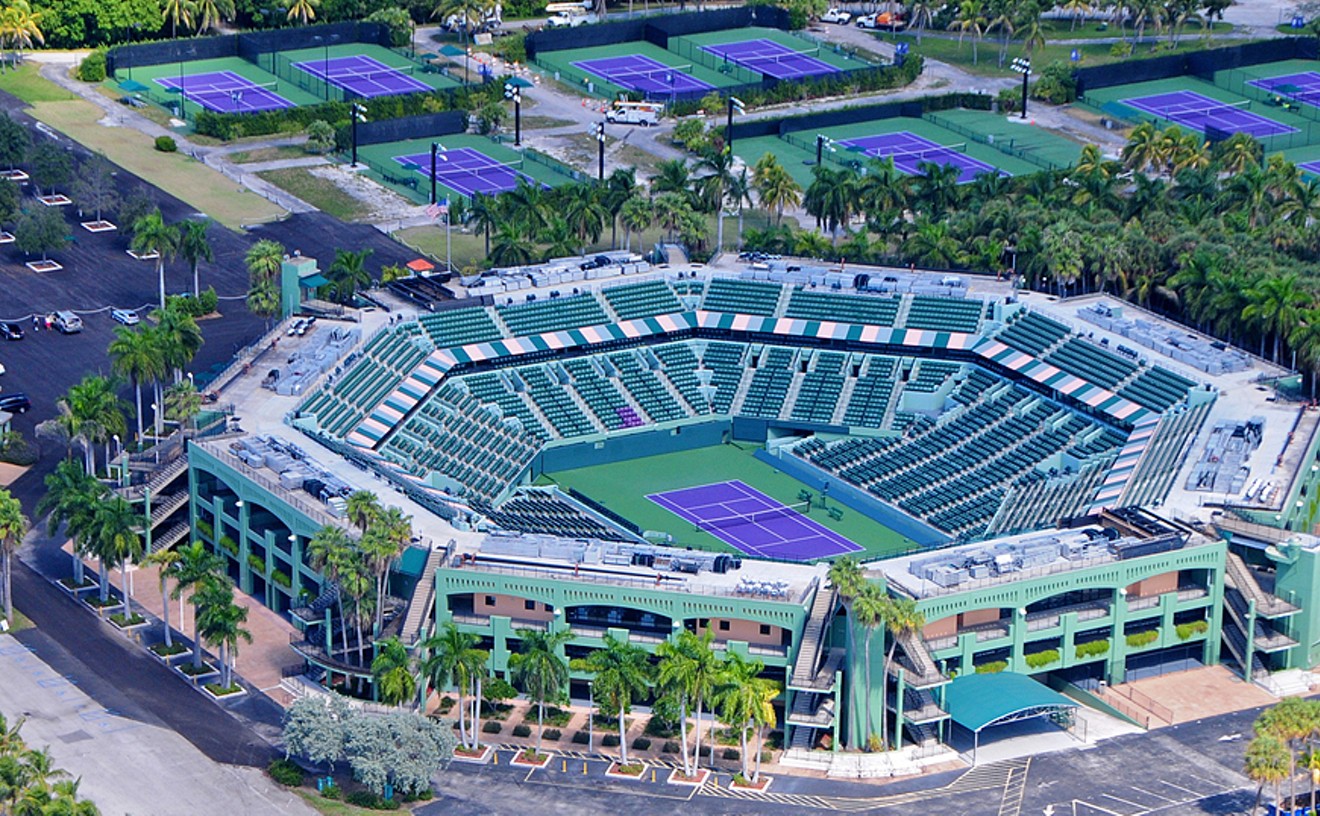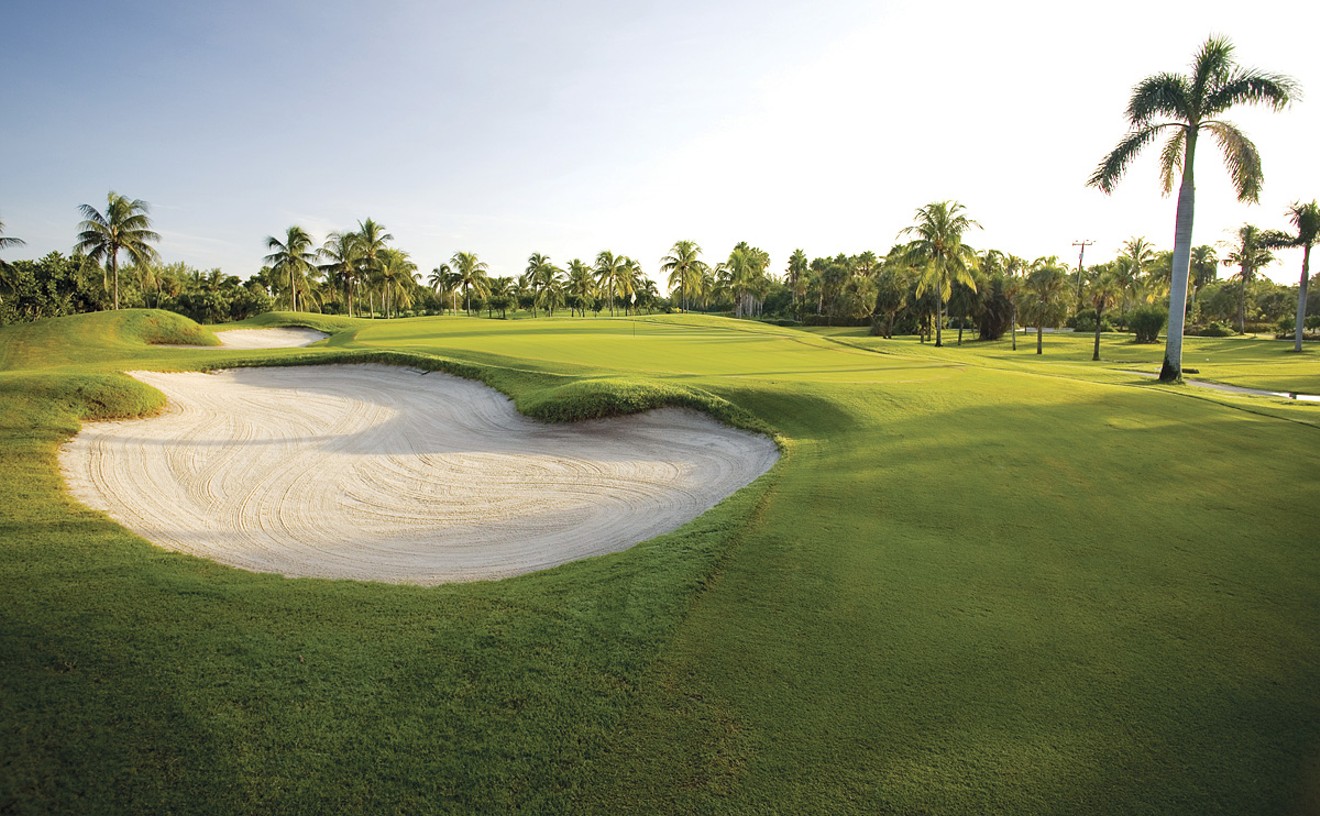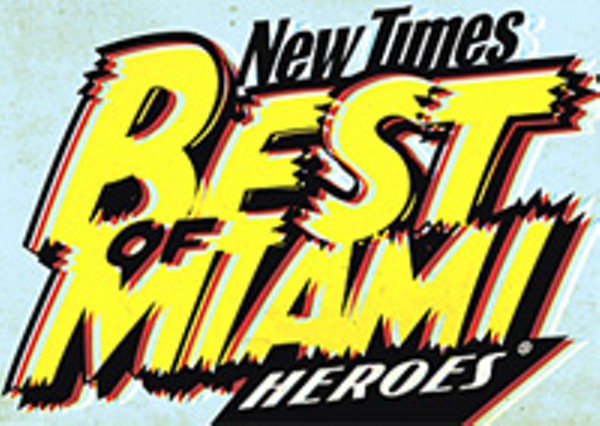Best Tour Guide
Robert Burr
Robert Burr was born and raised in the county of Dade. His family came here in 1876, and traces of his ancestors' hard work can be found from Arch Creek Park to Burr's Berry Farm. As you might expect from a seventh generation member of a pioneering family, he knows the nooks and crannies of this city like the back of his hand. On any given weekend Burr is leading one of the many walking and driving tours he's created. He has introduced thousands to the pleasures of the Redland and Coral Gables through his ever-popular Redland Riot tour, as well as his Coral Gables Wine Walk, Gallery Stroll, and Pub Crawl. He's done this in person by leading the procession, although the front-and-center position isn't necessarily his favorite. "I really don't want everyone to go with me, per se. In the Gables, we're doing a wine walk tonight. And people will call and say, ÔOh no, it's already sold out.' And I'm like, ÔYou know whatç Go do a wine walk with you and your friends! I ultimately hope to set an example for how to go do this stuff yourself," explains the affable, silver-haired gent. Burr has single-handedly reinvented the concept of locals discovering Miami on their own. His comprehensive Websites offer print-it-yourself maps that highlight hidden gems in neighborhoods that people usually just drive through. The Gables tours focus on the area's rich dining and boozing prospects, and the Redland Riot Tour (and recently added Redland Riot Road Rallye) leads groups of explorers into the still-lush corners of Miami's rapidly developing back yard. Exploring the Redland is a Burr family tradition. "When I was a kid, when they said, ÔHop in the station wagon, we're going to the Redlands.' That meant we'd get to go see Uncle Charlie and pick some strawberries," Burr recalls. "One of the simple pleasures in life is to pick your own fruit. Someday it's going to be something that's just in the past, picking your own strawberries." The U-Picks are disappearing and the farmland is being converted into little boxes made of ticky-tacky that all look just the same. But thanks to the efforts of Robert Burr, urbanites seeking a weekend getaway will continue to discover the pastoral pleasures of the Robert is Here produce stand, Schnebly Winery, and historic Cauley Square, thereby preserving what's left of Miami's verdant past.
Best Political Miscalculation
Frank Bolaños's entire career in 2006
First he supported the ban of Vamos a Cuba, a 32-page children's book that Cuban exiles said glossed over the harsh realities of modern-day life on the island. The ACLU sued the district over the ban and won. Then Bolaños called for an appeal of a judge's ruling to allow the book on school library shelves, costing the district thousands and thousands of dollars. He was rewarded for this stupidity with backing from Gov. Jeb Bush in his campaign for state Senate against incumbent Republican Alex Villalobos (see above). During the campaign, Bolaños tried to use the book for political leverage among his constituents. His antics (namely a chicken suit) escalated that race into one of the nastiest, and costliest, state Senate contests in Florida history. Fortunately the voters in the district were smart and Bolaños was defeated.
Best Way To Get Fit
Everglades Snowbird Century
If you have never ridden 100 miles on a bike before, you have no idea (a) how good it feels, nor (b) how difficult it is. Nor do you realize how many billions of calories you'll burn in the process. For those who haven't, the annual Everglades Snowbird Century is a great place to begin. Scaredç Don't be: It's a ride, not a race, and if you think your legs will fail long before your resolve, sign up for the less demanding 25, 41, or 62-mile options. For a $35 registration fee — $5 of which is donated to Everglades National Park — riders travel the rural roads of Miami-Dade County from a vantage point like no other. The route is clearly marked, and every 20 miles or so, participants can stretch out and chill out at rest stops stocked with an array of water, sports drinks, fruit, and bagels. Technicians volunteered by local bike shops are but a phone call away should you experience mechanical problems, so the only thing for you to do is ride. And though you might not realize it at the time, this will probably be the most physically strenuous activity you will ever accomplish. And your ass will never have looked so good.
Best Gym
South Florida Boxing
When heading up the steep, narrow staircase to the second-floor South Florida Boxing Gym on Washington Avenue, a stale odor wafts into your nostrils. It's that unmistakable smell of sweat, which, though rank to some, is actually the first sign of a good gym. It means members are not busy admiring themselves in the mirror, or reading a gossip rag while "running" on the treadmill. It means hearts are pounding, pulses are racing, and people are working out. Since opening the gym almost nine years ago, owner Trevor Cedar has cultivated a following of men and women alike by offering a host of classes — all taught by professionals — designed to suit any age and ability, including technical boxing classes, muay thai kickboxing, and jiu-jitsu. Each participant gets to pound out aggressions on his own bag, and if that's not enough, don a mouthguard and step into the full-size boxing ring for a sparring class. If this place doesn't get you into fighting form, nothing will.
Best Political Comeback
Palm Trees on Biscayne Boulevard
Some said the trees were ugly. Others said they were a danger to motorists when their fanlike fronds dropped on the busy street. And the Florida Department of Transportation said Biscayne would be better lined with oak trees. Oaks! In tropical Miami! In 2006 the New York Times wrote about the planned uprooting of the palms, and indeed the evil, aesthetically challenged state agency did rip out some trees near NE 69th Street. Then, thanks to a group of Eastside residents and Commissioner Marc Sarnoff, an agreement was reached in February: The state replanted palms and other trees between NE 37th and 87th streets. May Biscayne be royal once again.
Best Municipal Advancement
The Strong-Mayor Petition
It took him two years and an exhausting legal battle with the county commission and its benefactors, but Miami-Dade Mayor Carlos Alvarez succeeded in assuming more power over county government. Now Miami-Dade joins major metropolitan areas such as New York, Chicago, and Los Angeles, where one individual is accountable for mismanagement, theft, and separating taxpayers from their well-earned dollars. In other words, if another scandal breaks out at the airport, seaport, housing agency, or building department, Miami-Dade citizens can blame Alvarez. And if he doesn't clean things up, we can vote him out. Now if we could only set term limits on the commissioners, get rid of single-member districts, and impose lobbyist reforms. Then maybe Miami-Dade could finally begin to focus on becoming the international gateway to the future.
Best Tennis Courts
Crandon Park Tennis Center

Photo by Richard Cavalleri / Shutterstock.com
Ensconced in the foliage of Crandon Park, the tennis center is not only the most aesthetically pleasing place to play, but also offers diverse surfaces. The seventeen hard courts, seven of which are equipped with lights for nighttime playing, are the very courts used in tournament play when the Sony Ericsson Open (formerly the NASDAQ-100, and before that the Lipton) comes around every spring. The park is closed from the first week in March to the third week in April to prepare for competition between the sport's top 96 players, but for the rest of the year the not-so-skilled can play on them for $3 per person, per hour ($5 at night). For those who prefer clay, Crandon has two courts surfaced with red and four with green. And if your favorite movie is The Queen and you watch Wimbledon on television each year — while eating strawberries and cream and wearing absurd flowery hats — the center has two grass courts specifically designated for you and your Anglophile friends. (Grass courts are $10 per person, per hour; a stadium court costs $12 per person, per hour.)
- 7300 Crandon Blvd., Key Biscayne, 33149 Map
- 305-365-2300
- miamidade.gov/parks/crandon-tennis.asp
Best Driving Range
Crandon Golf at Key Biscayne

Courtesy of Miami-Dade County Parks, Recreation and Open Spaces Department
A basket of balls at this public course's driving range doesn't cost any more than one at the other county-run courses, but Crandon Golf at Key Biscayne might as well be another planet. Besides a gorgeous tropical setting teeming with bird life, there is a cafe that serves filet mignon (for special events) and coconut shrimp and a locker room with tile mosaic floors. The driving rangeç It's perfect, ringed with pine trees and palms. Flags on raised faux greens are icing on the cake. Buckets go for $6.26 (60 balls) or $3.26 (30).
- 6700 Crandon Blvd., Key Biscayne, 33149 Map
- 305-361-9129
- golfcrandon.com
Best Quote
Tom Tancredo's rant
We are a polarized bunch here in Miami. The Cubans hate Castro, the Venezuelans hate Chavez, Haitians hate a lot of their leaders, the city people hate the beach people, and the beach people don't even bother with the hot mess that is downtown Miami. But for one brief, shining moment back in November 2006, we all united in our hatred of one man: U.S. Rep. Tom Tancredo of Colorado. He became the object of our ire after he had the audacity to compare our city to a Third-World country during an interview with the rabidly conservative online magazine www.worldnetdaily.com. His quote about Miami reverberated from the colada windows in Little Havana to the fried goat joints in Little Haiti to the martini bars of South Beach. "Look at what has happened in Miami," Tancredo whined. "It has become a Third-World country. You just pick it up and take it and move it someplace. You would never know you're in the United States of America. You would certainly say you're in a Third-World country." Well, Tom, Miami is our Third-World country. And we're proud of it. So let's send a message to Tom, in our respective, awesome three languages:(Spanish) "Vete pa'l carajo, Tom!"(Kreyol) "Get maman ou, Tom!"(English) "Fuck you, Tom!"
Best Basketball Court
Eaton Park
Bobby banks in an eighteen-foot jumper over J-Rod's outstretched hand. "You can't stop me!" Bobby taunts. The nineteen-year-olds have been going at it, one-on-one, for the past 35 minutes on the asphalt court closest to the train tracks. They have come out here every other day, around the same time, 4:30 p.m., playing with the same beat-up basketball with pieces of leather torn off its hide, for the past two years. "Out here, your ass is mine, chico!" Bobby razzes. They aren't the only playground ballers who make playing at Eaton Park, right across from the Lemon City library on 61st Street and NE Fourth Avenue, a ritual. Young men from all over Little Haiti and the surrounding area come here to polish their ball-handling and shooting skills. Gray clouds fill the sky, casting a cool shadow over Eaton Park — a welcome relief for the eight teenage boys playing a half-court game on the second court. A train horn wails in the distance. The ground underneath the basket begins to rumble. Soon a freight locomotive bound for the Hialeah rail yard roars by. The boys sitting on top of a fallen wood light pole stare as the immense diesel-power steel serpent goes past. Even the teens showing off their hops stop their match. Then a homeless man wearing a brown cowboy hat and a red Michael Jordan Chicago Bulls jersey tucked into his khakis rides a bicycle around the court's perimeter. As he does this, he smiles, rings the bike's bell, and waves at everyone.
- 6015 NE Fourth Court, Miami, 33137 Map





